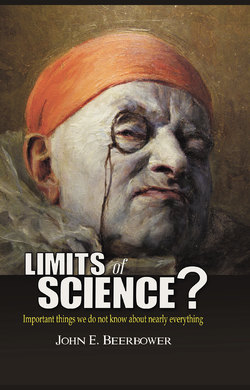Читать книгу Limits of Science? - John E. Beerbower - Страница 10
На сайте Литреса книга снята с продажи.
An example: The gene
ОглавлениеPerhaps a more vivid and suggestive example is the concept of the “gene.” In the 1860s, the Moravian monk Gregor Mendel, in his famous experiments with hybrid peas, crossing round with wrinkly and yellow with green peas, discovered patterns of heredity. Subsequently, the experimental data were expressed in a theory of “genes” expressing recessive and dominant traits, with which we are all at least passingly familiar.9 The second half of the twentieth century brought the emergence of molecular biology, with the “discovery” of DNA in 1953, and then RNA and so on.
One might have expected that these breakthroughs would lead to a physical identification of the “gene” within the cell structure, that is, that we would be able to identify objects (by chemical composition and structural location) that constitute the gene that is the transmitter of hereditable traits. Instead, biologists seem to have discovered that the gene, as previously conceived, does not exist. Instead, heritable traits are transmitted by a variety of types of quite complex processes and elements contained within the cell. See, e.g., The Stanford Encyclopedia of Philosophy, “Gene” (revised 2009).
Interestingly, however, the Mendelian genetic theory is still a good—indeed, perhaps the most effective—method of predicting the inheritance of traits. In addition, we have been able to ascertain that the human genome consists of only about 20,000 genes, not much more than many other life forms of complexity greater than the bacteria (and far fewer than had been expected when the human genome project began). We can also identify numerous genes that a variety of quite different animals have in common. See Frank Ryan, Virolution (2009), p.2. Thus, the theory is eminently useful. It appears that the concept of a gene reflects various bundles of processes and cell constituents that as a bundle function just as the supposed gene. In addition, different traits are transmitted by considerably different bundles—some much more complicated than others.
So, is the theory based upon genes true or false?
One answer is to say that the Mendelian theory reflects a higher level or macro view of the phenomena while molecular biology is dealing with a more granular or micro level of activity. The assumption would be that when the theories have been perfected, they would both be capable of generating the same predictions or inferences at the level of the organism, but that the micro level theories would be able to explain many details that the macro theory would not even perceive as existing. It would then be the case that the macro theory (based on genes) would be reducible to the molecular theories. Even if that reduction were to be achieved, the question of whether the genetic theory is true would still present itself.
One might say that the question is not important or that it is not really meaningful. The macro theory “explains” what happens (that is, what occurs) and enables action based upon reliable predictions, even if it does not “describe” the details of how, or even why, it occurs.
